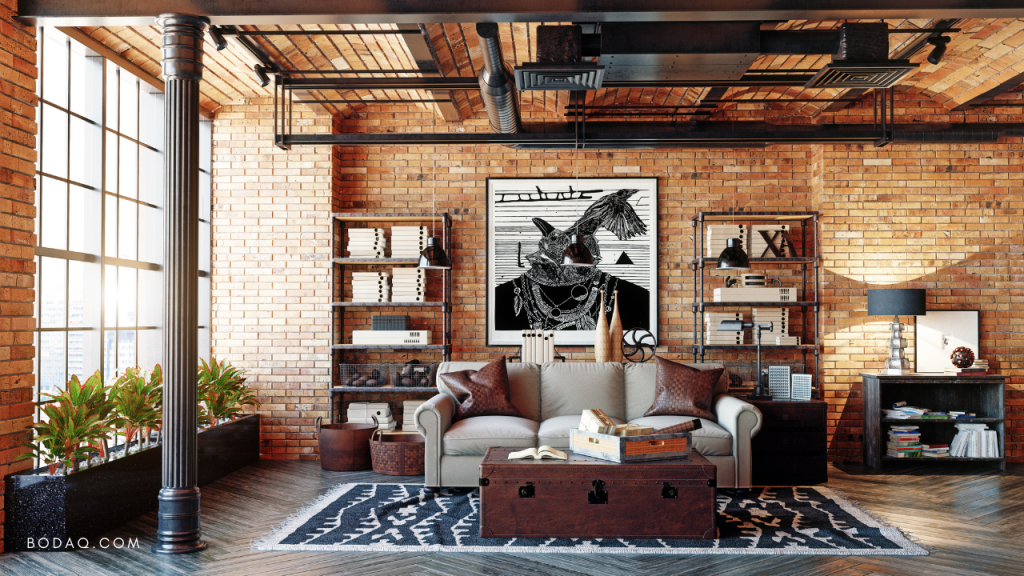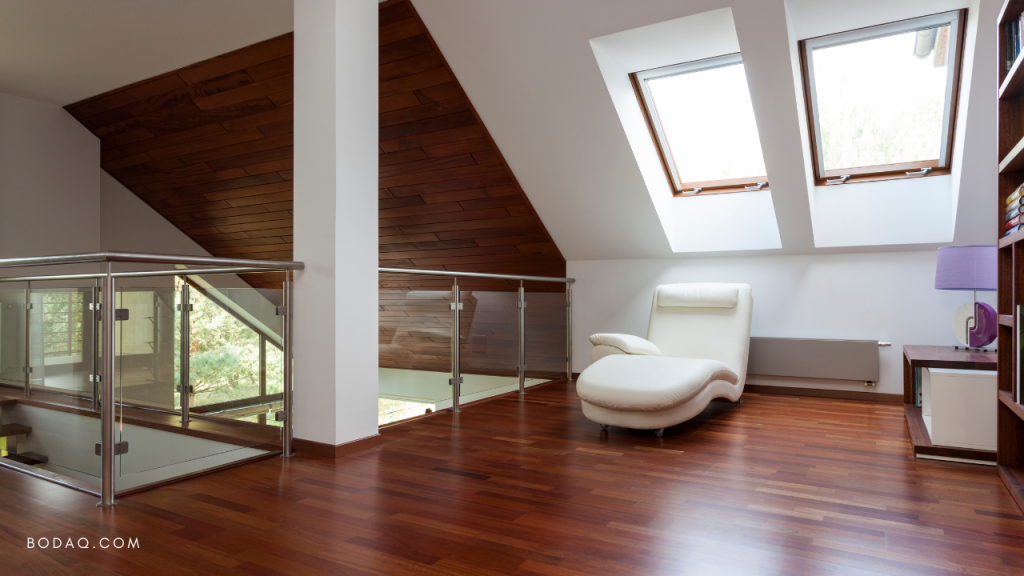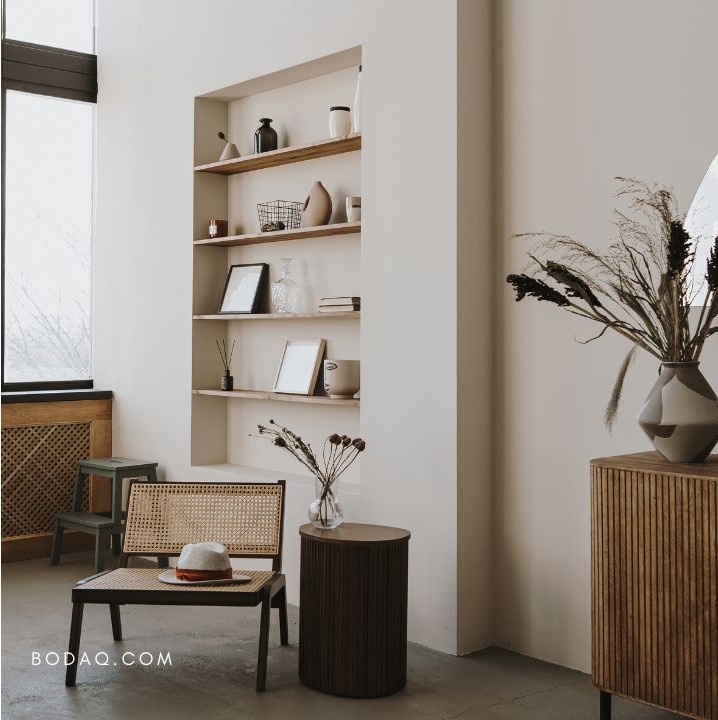Making a Statement: Innovative Ideas for Styling Columns in Your Home
Table of Contents
Columns are not just structural elements that support the weight of a building; they are architectural features that can add character and visual interest to your home’s interior. However, many homeowners are unsure how to incorporate or enhance columns within their overall design scheme. Whether you want to embrace the columns as focal points or seamlessly blend them into the surrounding space, there are various creative approaches you can take.
In this article, we will explore innovative ideas and practical suggestions for making the most of the columns in your house. From highlighting their natural beauty to transforming them into functional elements, we will delve into different strategies to help you turn these architectural features into stunning design elements. So, let’s dive in and discover the exciting possibilities of working with columns in your home.
Embrace the Columns
When it comes to columns, one approach is to embrace their presence and make them a prominent feature within your interior design. By highlighting their natural beauty and incorporating them strategically, you can transform them into captivating focal points that draw the eye and enhance the overall aesthetic of your space.
Highlighting the natural beauty
To showcase the inherent charm of columns, it’s essential to choose the right materials and give them the attention they deserve. Here are some ideas to help you highlight their natural beauty:
Choosing the materials
The material of your columns can significantly impact their visual appeal. For instance, if you have columns made of elegant marble or exposed brickwork, consider preserving their natural texture and color. Opt for minimal treatments or finishes that enhance their inherent beauty rather than covering them up. Conversely, if your columns are plain or lack visual interest, consider adding texture or decorative elements to enhance their appearance.
Polishing or painting the columns
Another way to highlight the natural beauty of columns is by polishing or painting them. If your columns are made of wood or metal, you can bring out their luster by polishing or refinishing them. It will not only give them a renewed look but also accentuate their unique characteristics. Alternatively, painting the columns in a color that complements the overall color scheme of the room can create a striking visual impact, turning them into eye-catching design elements.
Incorporating columns into the overall design
Instead of treating columns as mere structural elements, you can integrate them into the overall design scheme of your space. By doing so, you can transform them from potential obstacles into captivating features that enhance the visual appeal of the room.
Making them a focal point
If you have columns in areas such as the living room or entryway, consider making them the focal point of the space. Draw attention to the columns by strategically arranging furniture or décor around them. For example, placing a stylish sofa or a unique artwork near the columns can create a visual connection and emphasize their significance. By highlighting the columns as a central element, you can elevate the overall design and create a sense of architectural grandeur.
Enhancing their visual appeal with lighting
Lighting plays a crucial role in accentuating architectural features, and columns are no exception. Install lighting fixtures such as sconces or spotlights to illuminate the columns and create dramatic lighting effects. This not only draws attention to the columns but also adds depth and dimension to the surrounding space. Experiment with different lighting techniques to find the perfect balance between highlighting the columns and creating an inviting ambiance.
Camouflage and Blend
While some homeowners prefer to embrace the columns and make them a focal point, others may prefer to camouflage or blend them into the surrounding space. This approach can be particularly useful when the columns disrupt the desired flow or aesthetic of the room. By employing clever design techniques, you can seamlessly integrate the columns into your existing interior design scheme.
Creating seamless integration
To achieve a cohesive and harmonious look, consider the following ideas for camouflaging and blending the columns with the rest of the space:
Using matching or complementary colors
One effective way to blend columns into the surrounding space is by using matching or complementary colors. Paint the columns in the same color as the adjacent walls or choose a hue that harmonizes with the overall color palette. This creates a sense of continuity and visually integrates the columns into the room. Alternatively, you can employ contrasting colors to make the columns stand out as intentional design elements.
Applying wallpaper or textured finishes
Another method to camouflage columns is by applying wallpaper or textured finishes. Select wallpapers that mimic the pattern or texture of the adjacent walls, allowing the columns to blend seamlessly with the background. This technique works particularly well when the columns are not load-bearing and can be covered without affecting the structural integrity. Additionally, applying textured finishes such as stucco or faux finishes can help mask the columns and create a cohesive visual appearance.
Employing strategic placement of furniture and décor
Strategic placement of furniture and décor can effectively minimize the visual impact of columns and create a harmonious flow within the space. Consider the following ideas:
Arranging furniture to minimize visual impact
Position furniture in a way that diverts attention from the columns. For example, place large pieces of furniture such as bookshelves or cabinets in front of the columns to partially conceal them. This arrangement not only camouflages the columns but also provides functional storage or display space. Additionally, arranging seating areas or creating cozy nooks that are perpendicular or angled away from the columns can help redirect focus to other areas of the room.
Adding drapes or curtains to soften the appearance
Incorporating drapes or curtains can soften the appearance of columns and create a more cohesive design. Install floor-to-ceiling curtains or drapes on either side of the columns to visually frame them. This technique adds a touch of elegance and visually integrates the columns into the overall decor. Choose fabrics that complement the room’s style and color scheme, further enhancing the cohesive look.
Using interior film to transform column surfaces
The interior film is a versatile and cost-effective solution for transforming the surfaces of columns. It offers a wide range of finishes, textures, and patterns that can completely change the look of the columns without the need for expensive renovations or construction work. Consider the following options:
Wood grain film
Apply a wood grain interior film to give your columns a natural and warm appearance. This can be particularly useful when trying to achieve a rustic or traditional aesthetic. With various wood species and finishes available, you can select the perfect look that complements your overall design scheme.
Metallic film
For a modern and contemporary touch, consider using metallic interior film. This option allows you to create a sleek and sophisticated look for your columns, whether it’s a brushed metal or a polished chrome finish. The reflective properties of the metallic film can also add an element of visual interest and play with lighting effects.
Textured film
Interior film with textured finishes can be an excellent choice to add depth and dimension to your columns. Options like stone, brick, or concrete textures can create a stunning visual impact, giving the appearance of actual masonry without the need for extensive construction work. These textured films offer a realistic look and feel, providing a unique design element to your space.
marble film
Utilizing marble film for a luxurious touch
Marble film is a popular choice when it comes to transforming column surfaces. This versatile interior film allows you to achieve the timeless elegance of marble without the expense and hassle of installing actual marble. With a wide range of marble patterns and finishes available, you can select the perfect style to suit your design vision. Whether you desire the classic veined look of Calacatta marble or the rich tones of Marquina marble, applying marble film to your columns instantly elevates the space with a luxurious touch. The smooth and polished appearance of marble film creates a sophisticated aesthetic, adding a touch of opulence to your home’s interior.
Using interior film on columns not only allows you to transform their appearance but also protects against wear and tear. It is a durable, low-maintenance solution that can withstand daily use, making it ideal for high-traffic areas.
Transform and Repurpose
Columns can serve more than just a structural purpose in your home. With a bit of creativity, you can transform and repurpose them to add both functionality and artistic flair to your space. Let’s explore some exciting ideas:
Converting columns into functional elements
Columns offer vertical surfaces that can be utilized to enhance the functionality of your home. Consider the following possibilities:
Installing shelves or storage units
Take advantage of the vertical space provided by columns by installing shelves or storage units around them. This allows you to create additional storage and display areas without taking up valuable floor space. Whether you opt for built-in shelving or freestanding units, incorporating them around the columns can provide both practicality and visual interest.
Creating a mini-library or display area
If you have columns in a reading nook or a quiet corner of your home, transform them into a mini-library or a display area. Install narrow shelves or wall-mounted bookcases to house your favorite books, creating a cozy and inviting atmosphere. Alternatively, use the column surfaces to showcase art pieces, collectibles, or decorative items that reflect your style and interests.
Using columns as artistic canvases
Columns present an opportunity to showcase your creativity and make a bold artistic statement. Consider the following ideas:
Incorporating murals or artwork
Turn the columns into captivating artistic canvases by incorporating murals or artwork. Hire a talented artist or even try your hand at painting to create a unique and eye-catching design. From abstract patterns to intricate scenes, the possibilities are endless. This approach adds a touch of personalization and makes the columns true works of art that enhance the overall aesthetic of the space.
Showcasing sculptures or decorative elements
Columns can serve as pedestals or display areas for sculptures and decorative elements. Whether it’s a small sculpture or a beautiful vase with fresh flowers, strategically placing these items on or around the columns adds visual interest and elevates the style of the room. Play with different heights, textures, and materials to create a visually dynamic display that draws attention to the columns.
By repurposing columns in functional and artistic ways, you can transform them from simple architectural elements into stunning design features that enhance the functionality and aesthetic appeal of your home.
Unify and Connect
Creating a cohesive and unified design is essential when working with columns in your home. By bridging the gap between columns and the surrounding space, you can ensure seamless integration and a harmonious design flow. Let’s explore some strategies to achieve this:
Bridging the gap between columns and the surrounding space
To establish a visual connection between columns and the rest of the room, consider the following ideas:
Introducing architectural details that complement columns
Incorporate architectural details or elements that complement the columns. For example, if your columns have intricate molding or decorative features, echo those details in other parts of the room, such as crown molding, baseboards, or door trims. This creates a sense of unity and coherence, making the columns feel like intentional design elements rather than isolated structural components.
Utilizing consistent design elements throughout the room
Maintain consistency in design elements to tie the columns with the rest of the space. This can include using similar materials, finishes, or color schemes throughout the room. For instance, if your columns are made of wood, consider incorporating wood accents or furniture pieces with a similar wood tone. This creates a visual thread that connects the columns to the overall design, resulting in a cohesive and harmonious look.
The PM006 Pietra Gray Marble pattern was used to highlight the column on the opposite wall from the wrapped with the same pattern wall.
Creating visual harmony with flooring and ceilings
The flooring and ceiling play crucial roles in the overall design scheme and can contribute to the visual harmony with the columns. Consider the following approaches:
Selecting materials and finishes that connect with columns
Choose flooring materials that complement the columns and create a seamless transition. For example, if your columns have a marble finish, consider using marble tiles or flooring materials that mimic the look of marble. This establishes a visual connection and unifies the space. Similarly, ensure that the ceiling design, whether it’s the color, texture, or architectural details, complements the columns and the overall aesthetic of the room.
Using lighting to unify the space
Proper lighting can play a significant role in unifying columns with the surrounding space. Use lighting fixtures strategically to highlight both the columns and the areas adjacent to them. Consider installing recessed lights or track lighting that directs the focus toward the columns. Additionally, use consistent lighting design throughout the room to create a cohesive ambiance that ties the columns into the overall visual narrative.
By bridging the gap between columns and the surrounding space, you can create a harmonious design flow that ensures the columns feel integrated rather than separate entities.
Conclusion: Embrace the Versatility of Columns in Your Home
Columns are not merely structural elements; they hold immense potential to elevate your home’s interior design. Whether you choose to embrace their natural beauty, camouflage them into the background, repurpose them creatively, or unify them with the surrounding space, columns offer a world of possibilities to explore. By incorporating these architectural features thoughtfully, you can transform them into captivating design elements that enhance the aesthetic appeal and functionality of your home.
Highlighting the natural beauty of columns through the right materials, finishes, and lighting techniques can make them striking focal points in your space. On the other hand, camouflaging and blending columns can create a seamless integration with the overall design scheme, ensuring a cohesive and harmonious look.
Additionally, repurposing columns as functional elements or artistic canvases provides an opportunity to maximize their potential and add both practicality and artistic flair to your home. From installing shelves or storage units to showcasing artwork or sculptures, columns can become versatile features that contribute to the functionality and aesthetic appeal of your space.
Finally, by bridging the gap between columns and the surrounding space through consistent design elements, architectural details, and lighting, you can create a unified and visually appealing environment. This ensures that the columns seamlessly fit into the overall design narrative, creating a cohesive and harmonious ambiance.
So, whether your columns are grand and commanding or subtle and understated, they hold the power to transform your home’s interior. Embrace their versatility, unleash your creativity, and unlock the full potential of these architectural elements to make a statement and elevate the design of your living spaces.
With careful consideration and innovative ideas, columns can become captivating features that leave a lasting impression on all who enter your home.
FAQ: What to do with columns in your house?
- Why are columns important in a home?
Columns serve both structural and aesthetic purposes in a home. Structurally, they provide support and distribute the weight of the structure. Aesthetically, columns can add architectural interest, create a sense of grandeur, and define the style of a space. They can be focal points that enhance the overall design and contribute to the visual appeal of the home.
- What is the best way to cover the column?
The best way to cover a column depends on the desired outcome and the specific design goals. Several options are available, including painting the column to match or contrast with the surrounding walls, applying wallpaper or textured finishes to camouflage the column, or using interior film to completely transform the column's appearance. Each approach has its benefits and considerations, and the choice should align with the overall design vision.
- How do you use a column in a house?
Columns can be used in various ways to enhance the design and functionality of a house. They can serve as architectural features, such as in grand entrances or as part of a porch or veranda. Additionally, columns can be incorporated as decorative elements, providing visual interest and defining different areas within a space. They can also be repurposed creatively, such as by converting them into shelves, storage units, or artistic canvases, adding both functionality and artistic flair to the house.
- What can you do with a masonry column?
Masonry columns offer unique design possibilities due to their inherent strength and durability. With masonry columns, you can explore options like showcasing their natural beauty by highlighting their texture and finish. They can be enhanced with lighting to create dramatic effects, or you can incorporate architectural details that complement the masonry aesthetics. Additionally, masonry columns can be transformed into artistic features by adding sculptures, decorative elements, or applying interior film to create a different surface appearance.
Remember, when working with columns, it’s important to consider the specific characteristics of your home, the overall design style, and your personal preferences to determine the best approach for utilizing and enhancing these architectural elements.




























